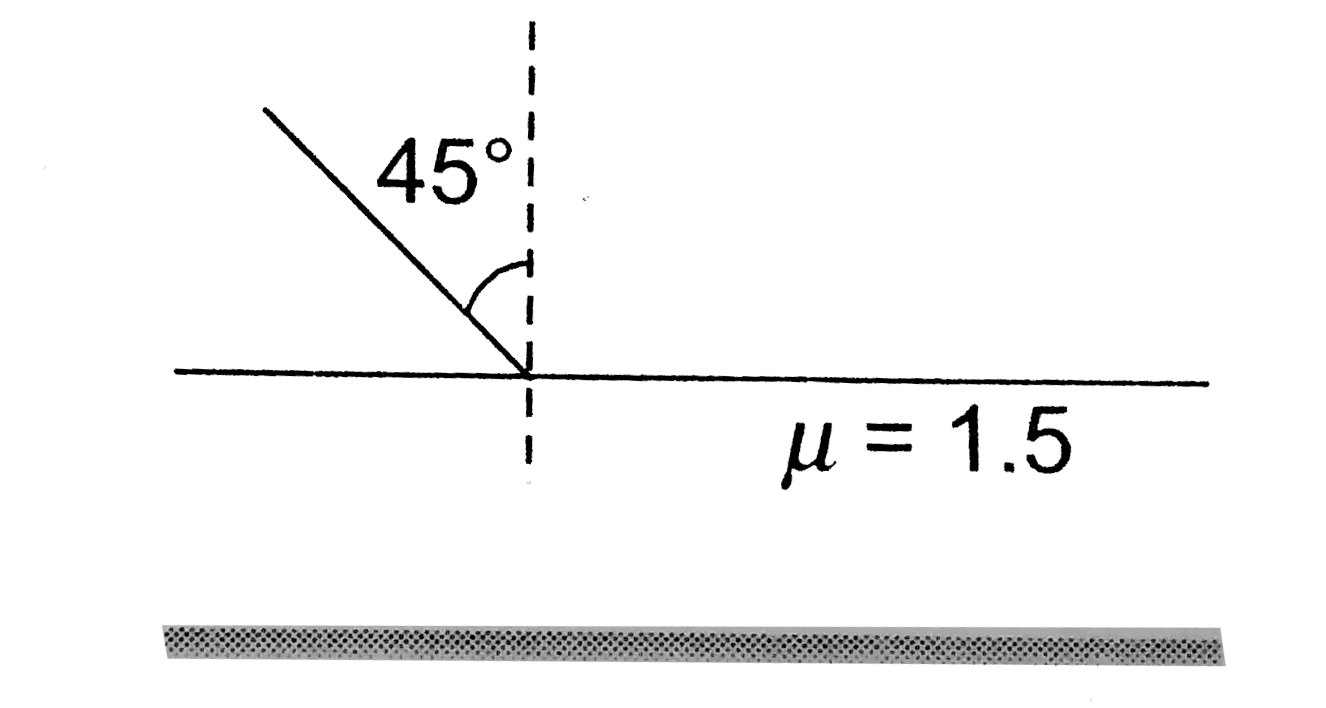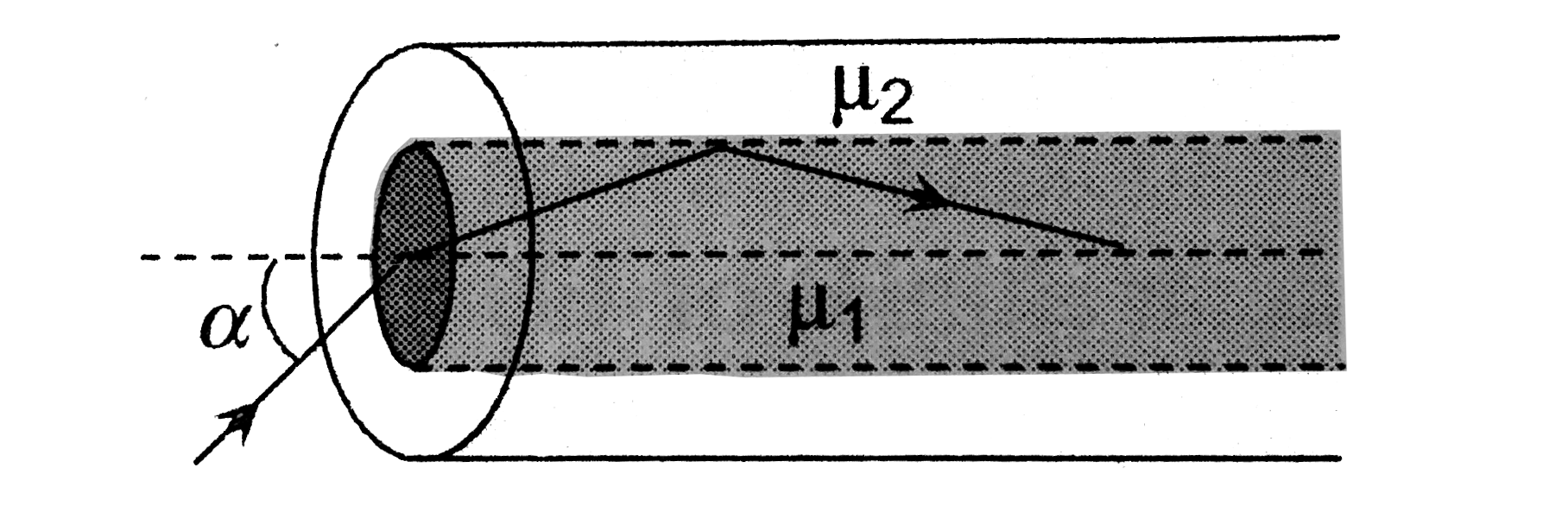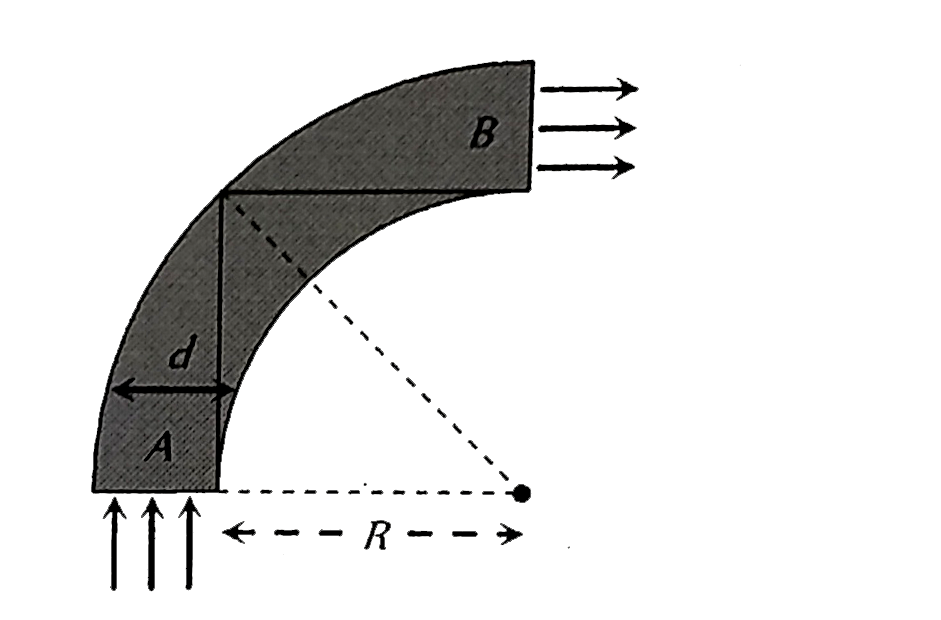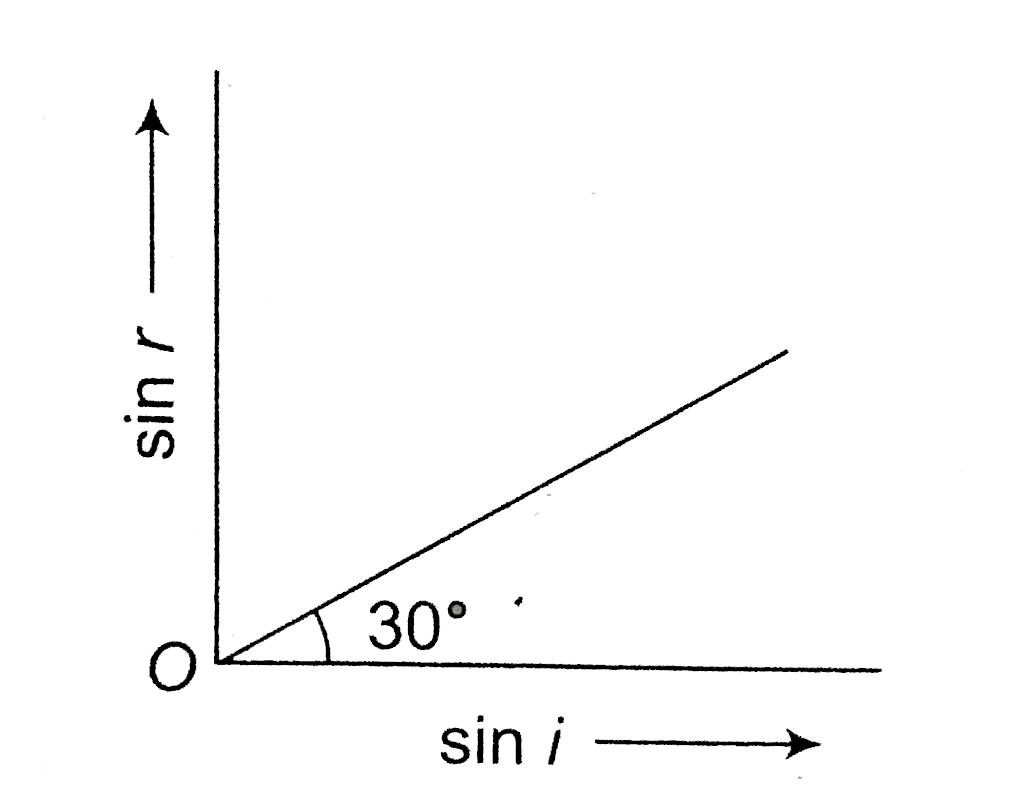Complete Solutions to DPP 1.2 of chapter RAY OPTICS of Class 12 book with complete answers and questions
| Class 12 | PHYSICS |
| Chapter | RAY OPTICS |
| CENGAGE PHYSICS DPP | DPP 1.2 |
| Number Of Questions | 15 |
| Academic Year | 2023-24 |
One side of a glass slab is silvered as shown. A ray of light is incident on the other side at angle of incidence `i=45^(@)` . Refractive index of glass is given as `1.5`. The deviation of the ray of light from its initial path when it comes out of the slab is

View SolutionWhen the rectangular metal tank is filled to the top with an unknown liquid, as observer with eyes level with the top of the tank can just see the corner E, a ray that refracts towards the observer at the top surface of the liquid is shown. The refractive index of the liquid will be

View SolutionA transparent cube of `15 cm` edge contains a small air bubble. Its apparent depth when viewed through one face is `6 cm` and when viewed through the opposite face is `4 cm`. Then the refractive index of the material of the cube is
View SolutionA plane mirror is placed at the bottom of the tank containing a liquid of refractive index `mu`. P is a small object at a height h above the mirror. An observer O vertically above P, outside the liquid sees P and its image in the mirror. The apparent distance between these two will be
View SolutionOne face of a rectangular glass plate 6 cm thick is silvered. An object held 8 cm in front of the first face, forms an image 12 cm behind the silvered face. The refractive index of the glass is
View SolutionA concave mirror is placed at the bottom of an empty tank with face upwards and axis vertical. When sunlight falls normally on the mirror, it is focussed at distance of `32cm` from the mirror. If the tank filled with water `(mu=4//3)` up to a height of `20cm`, then the sunlight will now get focussed at
View SolutionA slab of glass, of thickness 6 cm and refractive index 1.5, is placed in front of a concave mirror, the faces of the slab being perpendicular to the principal axis of the mirror. If the radius of curvature of the mirror is 40 cm and the reflected image coincides with the object, then the distance of the object from the mirror is
View SolutionA ray of light travels from an optically denser to rarer medium. The critical angle of the two media is C. The maximum possible deviation of the ray will be
View SolutionA point source of light `S` is placed at the bottom of a vessel containing a liquid of refractive index `5//3`. A person is viewing the source from above the surface. There is an opaque disc of radius `1 cm` floating on the surface. The centre of disc lies vertically above the source `O`. The liquid from the vessel is gradually drained out through a tap. What is the maximum height of the liquid for which the source cannot be seen at all.
View SolutionLight enters at an angle of incidence in a transparent rod of refractive index n. For what value of the refractive index of the material of the rod the light once entered into it will not leave it through its lateral face whatsoever be the value of angle of incidence.
View SolutionAn optical fibre consists of core of `mu_(1)` surrounded by a cladding of `mu_(2) lt mu_(1)`. A beam of light enters from air at an angle `alpha` with axis of fibre. The highest `alpha` for which ray can be travelled through fibre is

View SolutionA rod of glass `( mu = 1.5)` and of square cross section is bent into the shape shown in the figure. A parallel beam of light falls on the plane flat surface A as shown in the figure. If d is the width of a side and R is the radius of circular arc then for what maximum value of `(d)/(R)` light entering the glass slab through surface A emerges from the glass through B

View SolutionA ray of light travels from a medium of refractive index `mu` to air. Its angle of incidence in the medium is `i`, meansured from the normal to the boundary , and its angle of deviation is `delta. delta` is plotted against `i`. Which of the following best represents the resulting curve ?
View SolutionThe apparent depth of water in cylindrical water tank of diameter `2R cm` is reducing at the rate of `x cm // min ` when water is being drained out at a constant rate. The amount of water drained in `c.c.` per minute is `(n_(1)=` refractive index of air, `n_(2)=` refractive index of water )
View SolutionWhen light is incident on a medium at angle i and refracted into a second medium at an angle r, the graph of `sin r` versus `sin i` is as shown. From this one can conclude that

(i) the velocity of light in second medium is `sqrt3` times the velocity of light in the first medium
(ii) the velocity of light in the first medium is `sqrt3` times the velocity of ligth in second medium
(iii) the critical angle of the two media is given by `sin i_C=1sqrt3`
(iv) the critical anlge of the two media is given by `sin i_C=1sqrt2`
View Solution
DPP 1.2 questions and complete solutions for chapter RAY OPTICS of CENGAGE PHYSICS (HINGLISH) of Class 12